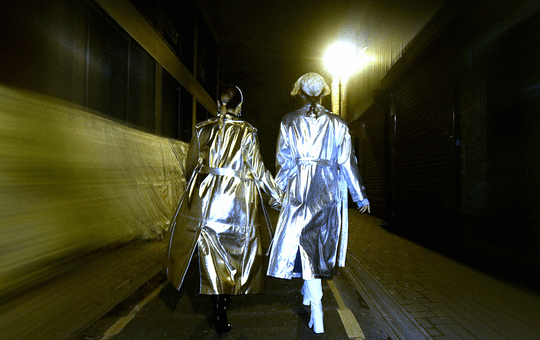Berghain doorman interviewed
Few clubs – if any – are as highly regarded by techno fans as Berlin’s Berghain. Part of the appeal is the famously elitist, and intimidatingly tattooed, bouncer Sven Marquardt. The New York Times published a fantastic interview with the photographer, ex-punk and apparently very nice chap, which acts as a great reflection on the music of this most important and weird city.
Mr. Marquardt is the doorman at Berghain, an abandoned thermal power station that is home to what many consider the greatest techno club in the world. Berghain is to electronic music fans in Germany what Bayreuth is to opera lovers, and Mr. Marquardt, 49, is the gatekeeper for the party that begins here Saturday nights and ends Monday mornings.
He was once among the most promising young photographers in East Berlin, and his life as East German artist, post-wall lost soul and present-day club celebrity traces the city’s arc over three decades. “In this time of upheaval, the mid-’90s, one somehow had to find oneself again,” Mr. Marquardt said.
Yet it could hardly come as such a surprise that he frightens some of the thousands of people who submit to his inspection at the club entrance each weekend. He wears a large metal skull ring on one hand, and one made of a mountain of tiny skulls on the other. His lower lip is pierced twice, and a pointed metal bar runs through his septum. His hands and throat are covered with tattoos, like his face, where if you look closely, a moth flutters among the thorns.
BORN in East Berlin the year after the Berlin Wall was built, Mr. Marquardt spent much of his childhood with his grandparents, who ran a bakery in Prenzlauer Berg. After his apprenticeship, he was mentored by a prominent but socially critical East German photographer, Helga Paris. With her son Robert, his best friend and also a photographer, he joined the punk scene, shaved the sides of his head and began wearing heavy black eye makeup.
This was more of a rebellion in East Germany than it might sound. To be labeled “asocial” was dangerous, and punks disappeared into the prisons of the Stasi, the East German secret police. “When I look back today at pictures from then, we looked so innocent in spite of our spiked-up hair,” Mr. Marquardt said.













